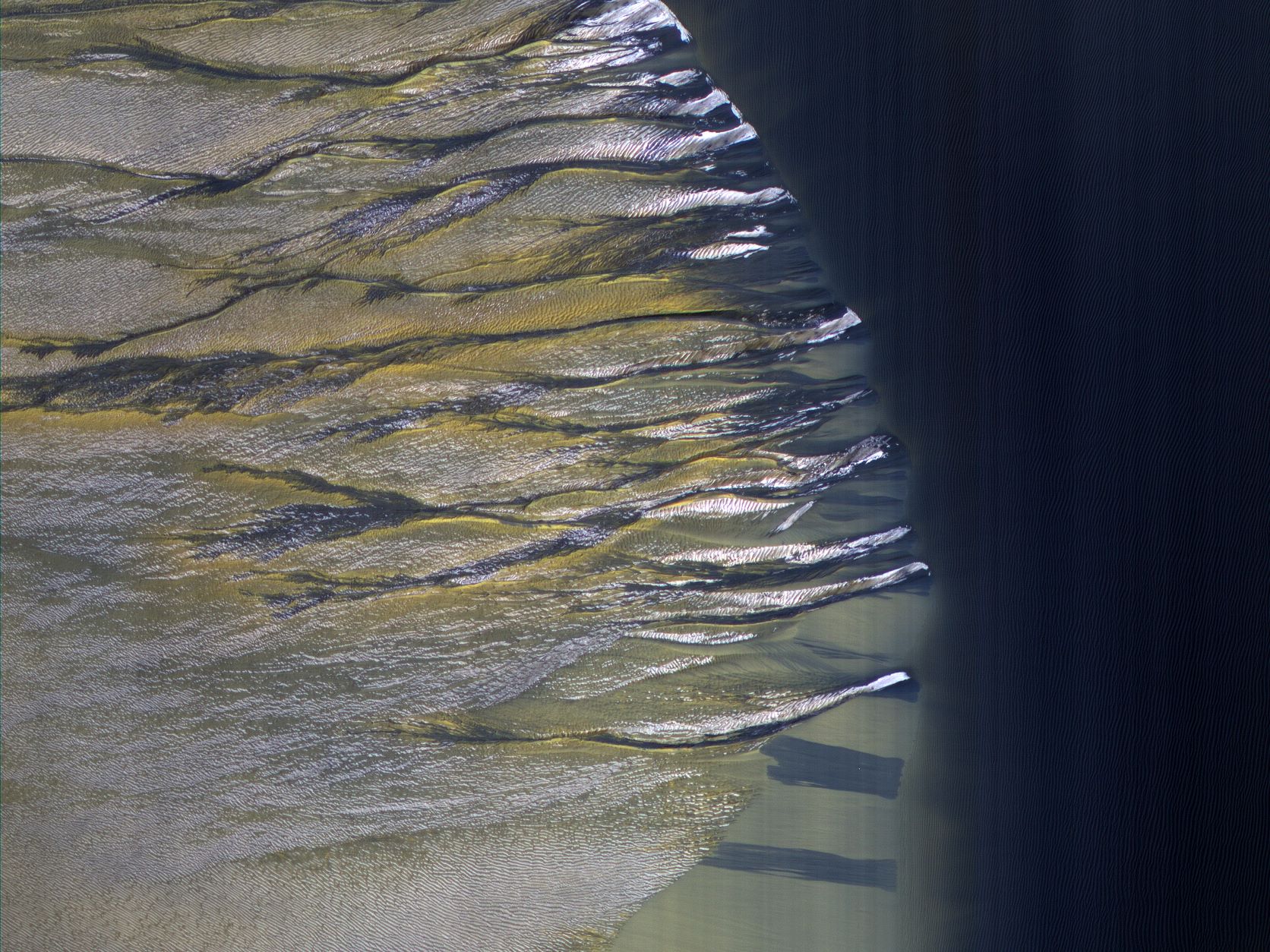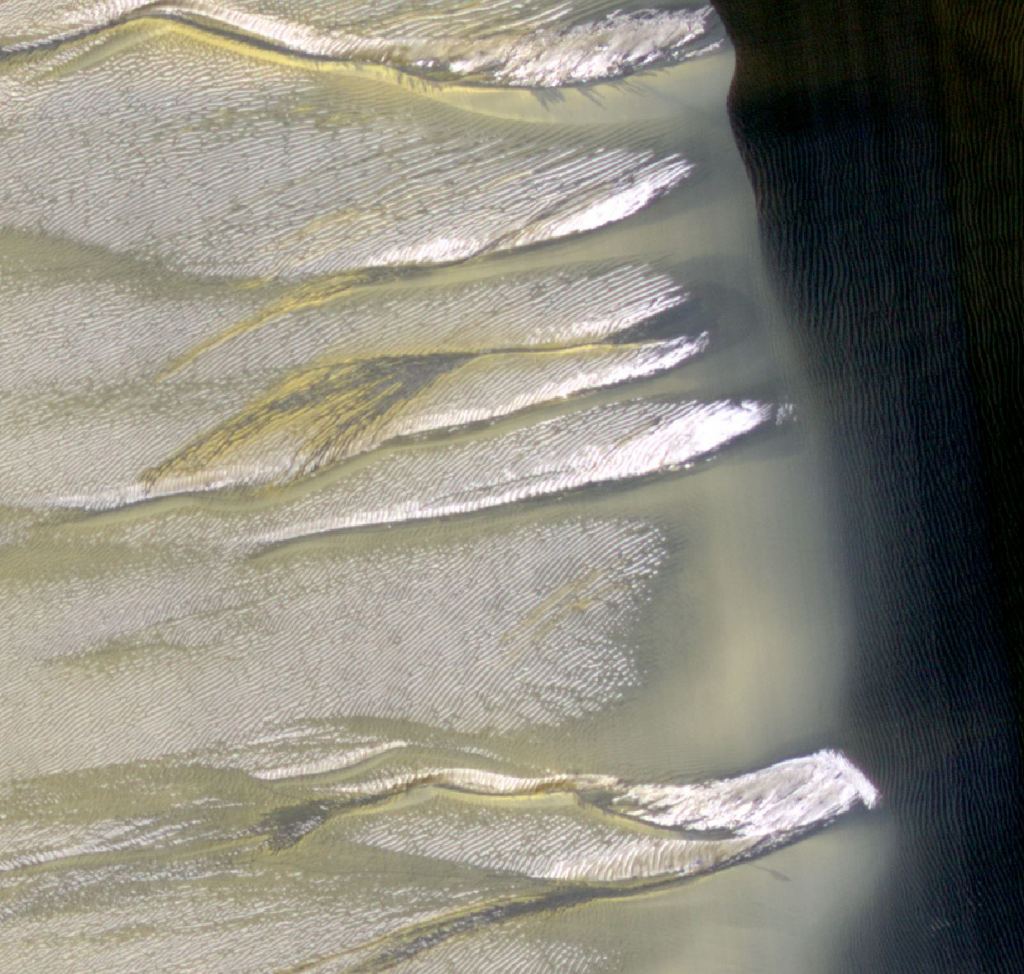Nothing says springtime on Mars like defrosting dunes.
In Mars' northern hemisphere, springtime has arrived, and observations from the HiRISE (High Resolution Imaging Experiment) onboard the Mars Reconnaissance Orbiter has captured partially defrosted dunes on the western slope of dunes inside Kaiser Crater.
In the winter, the dark sand dunes are covered in a blanket of white seasonal ice, which you can see in the image below. But this image actually shows the beginning of Martian springtime, where the sunny side of the dunes had just begun to thaw. The lead image shows even further thawing, with the darker dunes showing through.
"Bright patches of frost (white in enhanced color) are clearly visible and are made up of water and carbon dioxide ices," writes HiRISE team member Susan J. Conway. "Dark streaks of sand have flowed down the dune's slope that sometimes covers the frost. These flows are caused by the rapid transformation of the frost from ice to gas as the sun heats the dune in the spring."
Dunes form from Martian winds whipping across the loose regolith inside the crater.
Kaiser Crater is 207 km (129 miles) in diameter and is located in Noachis Terra west of Hellas Planitia in Mars' northern hemisphere. This sand dune field is one of several regions of sand dunes located in the southern part of the crater floor.
 Universe Today
Universe Today

